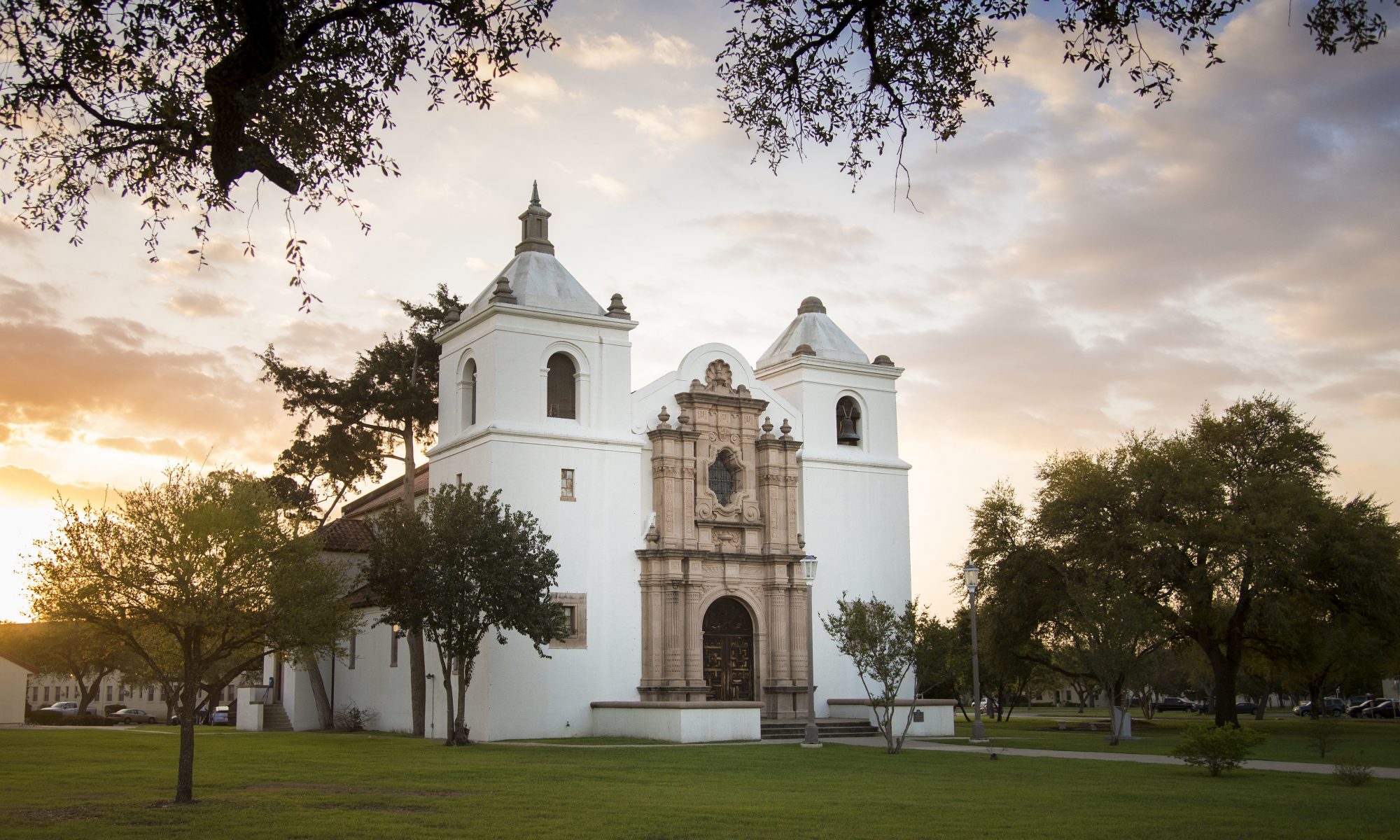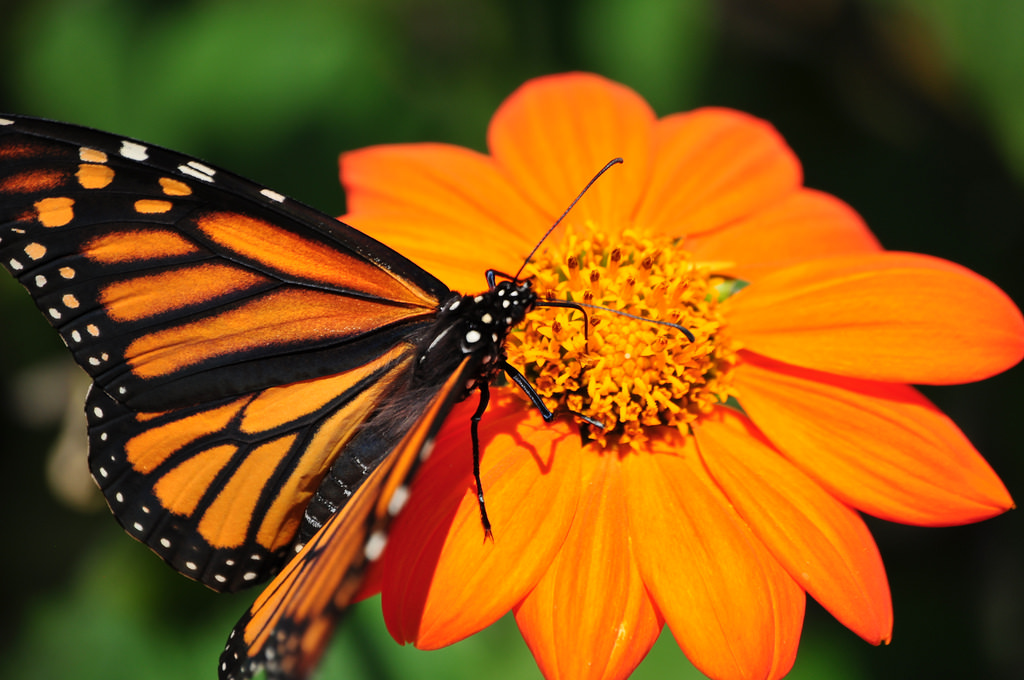Environmental history is “the study of interactions between culture and nature.” So let’s discuss the history of Monarch butterflies (Danaus plexippus) and how human populations have influenced this species over time. Monarch butterflies are bright orange with distinctive black and white markings. These butterflies lay their eggs on milkweed plants, which serve as the only food source for the growing caterpillars. Milkweed contains glycoside toxins that are harmless to the Monarchs but poisonous to predators, a very useful defense mechanism. Once the caterpillar goes through several developmental stages or instars, it forms a chysalis and eventually emerges as a butterfly.

North American Monarch butterflies are best known for their 3,000 mile long migratory journey, the mechanisms of which still baffle scientists to this day. Their migration, which spans several generations, takes them as far north as Canada and, during the winter months, as far south as Mexico City. In early Spring, Monarchs can be spotted in Texas and as the summer season rolls around, they migrate throughout the northern states up into Canada. Monarchs spend their winters in Mexico to avoid the freezing temperatures in the northern states. Most monarch butterflies only live for a few weeks. The last generation of each year is the over-wintering generation, which can live upwards of eight months in Mexico. Unfortunately, Monarch butterfly populations have declined by a staggering 90% in the last 20 years.
Recently, the Texas Butterfly Ranch hosted the third annual Monarch Butterfly and Pollinator Festival from October 19 through October 21, 2018. The festival launched with an informative forum on the future of Monarch butterflies. The forum, titled “Butterflies without Borders: The Monarch Butterfly Migration and our Changing Climate,” discussed the ambiguous future of the Monarch Butterfly. The issues discussed included: the influence of GMOs and pesticides on migration patterns, availability of nectar and host plants, climate change, and the controversial border wall proposed by the Trump administration. The panel consisted of the following experts:
- Karen Oberhauser, Steering Committee Co-Chair of Monarch Joint Venture and Director of the Arboretum in Madison, Wisconsin.
- Marianna Treviño Wright , Executive Director of the National Butterfly Center, Mission, Texas.
- Rebeca Quiñonez Piñon, Monarch Outreach Coordinator, National Wildlife Federation, Austin, Texas.
- Carey Gillam, author of “Whitewash: The Story of a Weed Killer, Cancer and the Corruption of Science,” Kansas City, Missouri.
- Robert Rivard, of the San Antonio news website, the Rivard Report served as moderator.
In July 2017, a crew of workers contracted by U.S. Customs and Border Protection illegally chopped down hundreds of trees, shrubs and other vegetation on private property belonging to The National Butterfly Center in Mission, Texas. The land “serves as a habitat for more than 400 endemic and migratory species, including monarch butterflies.” Marianna Treviño Wright, the Executive Director of The National Butterfly Center, describes the proposed border wall as a”waste of taxpayer dollars and an environmental disaster”. The National Butterfly Center has 11 distinct ecosystems and is home to a variety of Texas wildlife. The proposed border wall would be devastating for this wildlife, eradicating native habitats and host plants for butterflies, as well as isolating populations from each other. In addition, not all birds and butterflies will be able to fly over the 30 ft. vertical wall, cutting off migratory routes. The border wall would adversely impact “841 vertebrate species, 42 species of amphibians, 160 reptiles, 452 bird species, 187 mammals, and plant, fish, and invertebrates totaling 10,000 or more,” with many of these species likely facing extinction.
Future
Fortunately, there are many things you can do to ensure a future for Monarchs and other pollinators:
- Create a healthy habitat garden for Monarch butterflies. For resources, click here. The Texas Butterfly Ranch is commemorating the Tricentennial with a pledge to build 300 pollinator habitats — 300for300.
- Get involved in programs around your city. Through the National Wildlife Federation’s Mayors’ Monarch Pledge, U.S. cities, municipalities, and other communities can complete action items aimed at enabling Monarch species survival and re-population. These action items include creating habitats for the monarch butterfly and pollinators, educating citizens about how they can make a difference at home and in their community. San Antonio is actually one of only three Monarch Champion Cities throughout Canada, Mexico, and the United Sates that has committed to every action item on the list.
- Get out there and vote! If you believe that climate change is a pressing issue and want to ensure that Monarchs and other pollinators are made a priority, you must be politically active.
Habitat loss, overuse of pesticides, pollution, and looming border walls are abhorrent for many reasons but are also threats to the survival of pollinators and many other species. But you can make a difference, get out there and let your voice be heard.


This was so informative! I absolutley love butterflies, and there’s nothing more joyful than seeing them during their massive migration! This makes me want to plant milkweed in my garden at home! I definitely agree with you that the only way to make a change in the environment is to enact personal change, vote, and make our voices heard. Viva la mariposa!!
Thank you for this information Sara! I really enjoyed reading this and makes me want to try even harder with helping the environment and raising consciousness. I hate the administration deny facts that are evident and physically too. Thank you for giving us information so that we can help even more!
Thank you for bringing awareness to this problem. A couple of years ago I was able to see butterfly caterpillars in my garden, but they have not been back since. I have often wondered if they were suffering from environmental stresses like many animal populations do. The decline in butterflies has not gotten the same attention as the declining bee population, but both are very tragic and we all need to pitch in and help these species were we can. Many of the garden shops in the area have easy to shop sections in their outdoor areas where butterfly favorite plants can be bought. Plus many of those plants are drought resistant and do very well in the Texas environment.
I love stories like these. Environmental history has so much allure because it encompasses several different disciplines. Did anything in particular lead you to write this post, or is it simply something you’re passionate about? Often when I watch animal docs I end up wanting to research more and more about them. It’s not uncommon to end up in a black hole of reference material and old publications that document their histories. It’s awesome that you ended up in that same place, and shared this story with us!
This is one of the only stories I have read that mix environmentalism and history. Probably like many others I have not heard of the history of monarch butterflies only that I enjoy seeing them once a year. Another positive note about this article is that you point out what we could do to help and the future initiatives that will be going on.